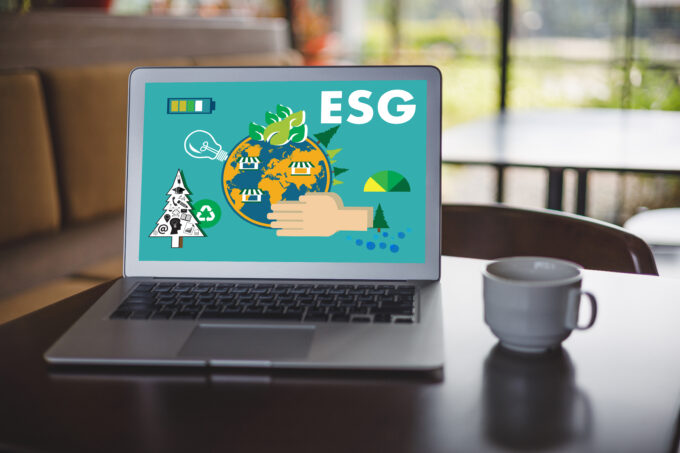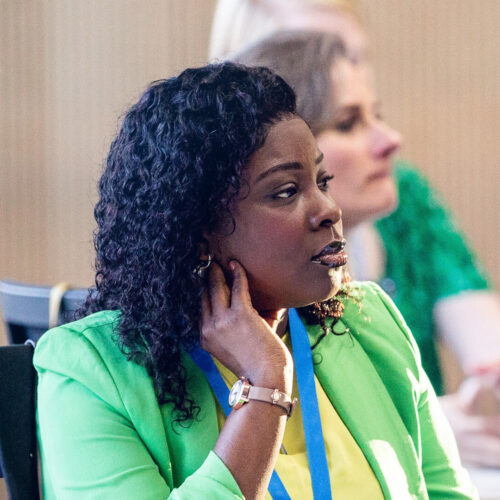
Digital sustainability: it pays to be a leader, not a laggard
Companies that excel in both digital and sustainable transformation attract a stock market premium, according to research. So, how do you tap into that value? ...

by Julia Binder Published 26 June 2023 in Sustainability • 6 min read
A buzzword that often crops up in conversations about corporate sustainability and ESG is materiality. This is a topic that has gained so much traction in recent years that it may even come up at a casual dinner party these days. Yet in reality, very few business leaders have their most material issues uppermost in their minds, and most employees are not aware of their company’s materiality assessment, even if it has been conducted for many years. The reason for this is that, to date, materiality assessments have primarily been seen as a communications and reporting exercise. But they can be used much more strategically than that. A materiality assessment, if used well, can be a key tool in prioritizing strategic topics for the whole business.
Before we talk about strategy, let’s talk about the basics. What do we mean by materiality? In general, materiality is defined as the information that a reasonable investor would want to have before making an investment decision, or information that might have a substantial effect on the financial value of a company. And in the context of ESG (environmental, social, and governance considerations) or corporate sustainability, a materiality assessment is a process by which a company identifies the ESG issues that are most significant given the operating context of their business.
There are currently two different approaches to this.
You can assess ESG factors in terms of their financial materiality. This means that you consider materiality from the perspective of investors and other providers of financial capital and focus on the issues that influence a company’s financial performance and enterprise value, also referred to as inward impact.
The leading standards for assessing financial materiality have been developed by the Sustainability Accounting Standards Board (SASB), now part of the IFRS Foundation. The SASB Standards vary by industry, reflecting the different sustainability risks and opportunities affecting the financial performance and value creation models of particular sectors over the short, medium, and long term. The SASB’s Materiality Map illustrates the relevance of 26 sustainability issues for 77 different industries.
Alternatively, you can consider sustainability issues in terms of impact materiality. Such an analysis relies on a multi-stakeholder approach to identify the areas where a company has the greatest economic, social, and environmental impact on the planet and society, also referred to as outward impact.

An impact materiality assessment will provide clarity on the most important social and environmental issues that your company should address. You may want to relate the outcome of this analysis to the 17 UN Sustainable Development Goals, each of which has several sub-targets. Nobody is expecting your company to tackle all of these, but your stakeholders will demand that you focus on those issues that you can influence.
One of the leading organizations monitoring impact materiality is the Global Reporting Initiative (GRI). The GRI Standards enable any organization to understand and report on the effects of its activities on the economy, environment, and people, and to prioritize the most important areas. Rather than looking at matters just from a financial or shareholder perspective, the GRI considers the interests of a broad range of stakeholders, which it defines as all individuals or groups that are – or could be – affected by the company’s activities and decisions. Think about your suppliers, employees, customers, partners, local communities and so on. Intensive stakeholder engagement, therefore, lies at the heart of an impact materiality assessment.
It is already clear that the two approaches are highly complementary. If you want to gain a holistic understanding of your company’s overall sustainability performance, you need to conduct both financial and impact materiality assessments. This combination has more recently been referred to as double materiality.
A few companies already carry out double materiality assessments, and the GRI and SASB are cooperating to harmonize their disclosure frameworks and create a comprehensive regime for the sustainability reporting landscape.
In any case, double materiality will soon be a mandatory disclosure requirement for many organizations. From 2024, large companies based in the European Union (or with an annual turnover in the EU of more than €150m) will be required to conduct double materiality assessments as part of the EU’s new Corporate Sustainability Reporting Directive.
But don’t fall into the trap of just performing your materiality assessment as a box-ticking exercise to meet regulatory requirements.
Extending your single or double materiality approach to one of strategic materiality can offer great benefits to a business.
While the true value of a thorough materiality assessment lies in utilizing the insights gained to future-proof the company’s strategy, most companies conducting a materiality assessment fail to use its insights in this way. .

From linear to circular – unlock sustainable business opportunities
Businesses should go beyond this double materiality method and adopt a strategic materiality approach.
A materiality assessment brings together in-depth data from the company’s most important stakeholders with an analysis of industry and market trends, sustainability reports, and regulatory changes, and this information provides a multitude of opportunities for strategic foresight. It also offers a terrific opportunity to actively engage your stakeholders in your sustainability journey.
Insights into your company’s most material sustainability issues might be used to:
As you can see, materiality assessments can offer you a multitude of strategic insights that may be going largely unnoticed. Ask yourself how you can use these insights to inform your strategy, your R&D activities, or your partnerships. And most importantly, disseminate the results across your company to empower and encourage all your employees to come up with suggestions to address your company’s most material issues.

Professor of Sustainable innovation and Business Transformation at IMD
Julia Binder, Professor of Sustainable Innovation and Business Transformation, is a renowned thought leader recognized on the 2022 Thinkers50 Radar list for her work at the intersection of sustainability and innovation. As Director of IMD’s Center for Sustainable and Inclusive Business, Binder is dedicated to leveraging IMD’s diverse expertise on sustainability topics to guide business leaders in discovering innovative solutions to contemporary challenges. At IMD, Binder serves as Program Director for Creating Value in the Circular Economy and teaches in key open programs including the Advanced Management Program (AMP), Transition to Business Leadership (TBL), TransformTech (TT), and Leading Sustainable Business Transformation (LSBT). She is involved in the school’s EMBA and MBA programs, and contributes to IMD’s custom programs, crafting transformative learning journeys for clients globally.

From linear to circular – unlock sustainable business opportunities

17 July 2024 • by Michael R. Wade, Evangelos Syrigos in Sustainability
Companies that excel in both digital and sustainable transformation attract a stock market premium, according to research. So, how do you tap into that value? ...

11 July 2024 • by Stéphane J. G. Girod in Sustainability
A series of watershed events forced CHANEL out of its comfort zone, culminating in the launch of CHANEL Mission 1.5°. With this new strategy, the luxury fashion house embarked on a journey...

5 July 2024 • by Avni Shah in Sustainability
Creative industries have a key role to play in creating positive social change. Here are six key insights to help them achieve their goals. ...

3 July 2024 • by Richard Baldwin, Salvatore Cantale in Sustainability
The EU Corporate Sustainability Reporting Directive (CSRD) will impose comprehensive and standardized sustainability reporting responsibilities on firms, adding unprecedented complexity to mergers and acquisitions. ...
Explore first person business intelligence from top minds curated for a global executive audience